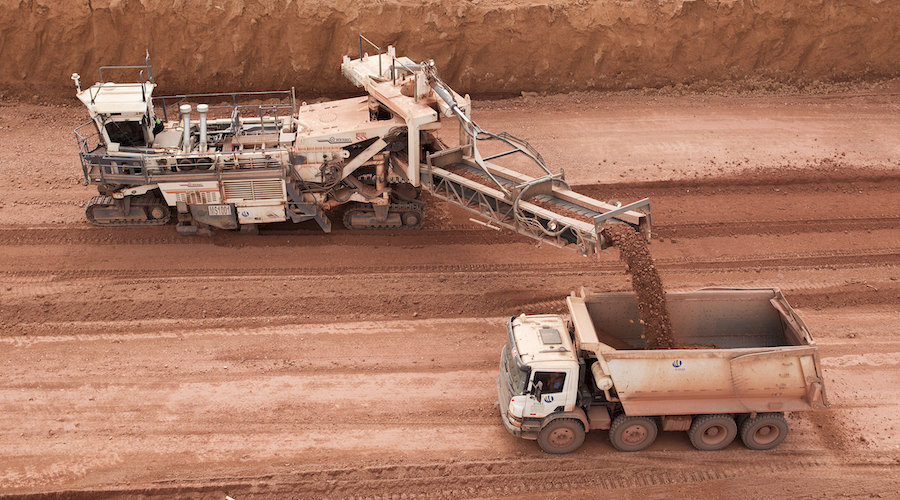MINING.COM Staff Writer | August 23, 2021 |

Bauxite mine in Brazil. (Reference image by Norsk Hydro ASA, Flickr).
Researchers at the Martin Luther University Halle-Wittenberg in Germany and the Brazilian University of Pará have found an alternative to the alternative to produce climate-friendly cement.

In a paper published in the journal Sustainable Materials and Technologies, the team explains that Portland cement – the most commonly used type of cement – is traditionally made using various raw materials, including limestone, which are burned to form clinker. In the process, calcium carbonate is converted into calcium oxide, releasing large quantities of carbon dioxide.
One promising solution is calcium sulphoaluminate cement, in which a large portion of the limestone is replaced by bauxite. However, bauxite is a sought-after raw material in aluminum production and is not available in unlimited quantities.
THE ALTERNATIVE TO THE ALTERNATIVE IS, THUS, NOT USING PURE BAUXITE BUT RATHER AN OVERBURDEN: BELTERRA CLAY
“This layer of clay can be up to 30 metres thick and covers the bauxite deposits in the tropical regions of the Earth, for example in the Amazon basin,” Herbert Pöllmann, co-author of the study, said in a media statement. “It contains enough minerals with an aluminum content to ensure good quality cement. It is also available in large quantities and can be processed without additional treatment.”
According to Pöllmann, another advantage is that Belterra clay has to be removed anyway, so it does not have to be extracted only for cement production.
In the study, the researcher and his colleagues explain that even though cement cannot be entirely produced without calcium carbonate, at least 50% to 60% of the limestone can be replaced by Belterra clay.
Another advantage of this process is that burning only requires 1,250 degrees Celsius – 200 degrees Celsius, which is less than for Portland cement.
“Our method not only releases less CO2 during the chemical conversion but also when heating the rotary kilns,” Pöllmann said. “By coupling these effects, CO2 emissions can be reduced by up to two-thirds during cement production.”
In extensive laboratory tests, the mineralogists were able to prove that their alternative cement meets all the quality requirements placed on traditional Portland cement.
No comments:
Post a Comment